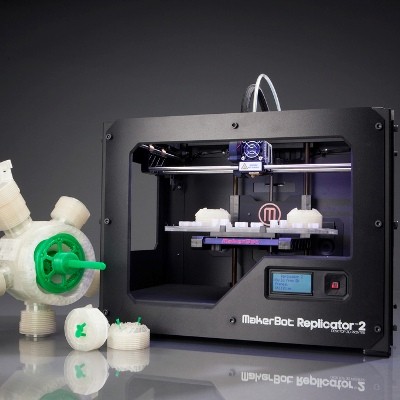Don’t Let Your Business Get “Netflixed”





 Email to a friend
Permalink
Email to a friend
Permalink
Friday, April 17, 2015
Saul Kaplan, GoLocalPDX Guest MINDSETTER™
Research and Development (R&D) for new business models is the new strategic imperative for all business leaders. Why? Business models don’t last as long as they used to. All businesses are vulnerable to being netflixed. A Netflix, Uber, or Airbnb can swoop in and disrupt or totally destroy existing industry business models. And make no mistake—this is not about new technologies or new products, it’s about new business models. These upstart companies didn’t invent anything; they all deployed new business models that networked available capabilities in different ways, to change how customer value is delivered.
Incumbent companies were caught flatfooted and unable to compete, because the typical company responds to competitors’ disruptive business models by leaning against them—creating regulatory moats to slow competitors while at the same time working urgently to strengthen their current business model and hold on to customers. However, tweaking and protecting the current business model will not work for long. These are stopgap measures at best. They will not prevent your company from being netflixed.
How can leaders avoid being netflixed? The only way to avoid this is to do ongoing R&D for new business models, the same way companies do R&D for new products and technologies today. Companies must explore and test new business models in the real world, even models that might disrupt their current business model. If you don’t, you can be assured someone else is. Since business models don’t last as long as they used to, the time to do R&D for new business models is when the current one is still strong. It’s too late if you wait until your current business model is netflixed. Just ask anyone in the newspaper business.
The CEO must directly lead R&D for new business models. Assigning the task to line executives responsible for the performance of the core business model will result only in incremental improvements to the existing business model. Assigning the task to a Chief Innovation Officer accountable to line management will have the same result. Innovation projects that improve the performance of today’s business model will be prioritized, selected, and funded, and projects aimed at developing potential new business model projects will be killed. So, it’s the CEO’s job to make sure that the current business model produces expected results, and also to prepare the organization for the next business model.
Here’s how R&D for new business models works: Create a sandbox—connected to but autonomous from the core—in order to combine and recombine capabilities in new ways that are not constrained by the current business model. From this sandbox, conduct real-world business model experiments. At all times companies should have a portfolio of business model explorations underway, including early stage concepts, in-market prototypes, and later-stage scalable models.
Today’s CEOs will manage several business model transitions over their careers. To avoid being netflixed requires that the capability to do ongoing R&D for new business models is established, and that business model innovation becomes an integral part of the corporate strategic planning process.
Saul Kaplan is the Founder and Chief Catalyst of the Business Innovation Factory (BIF). Saul shares innovation musings on his blog at It’s Saul Connected and on Twitter at @skap5.
Related Slideshow: 5 Tech Innovations Changing Oregon
New innovations in technology are changing things for Oregon and its residents. Here are five tech innovations that are making a difference.

Prev
Next
#1
Virtual Schools
Free virtual schools provide curriculums and a classroom experience over the internet. The Oregon Virtual Academy is part of national system that provides alternative education options for grades k-12. Students can interact with teachers and students from their homes, and be supplied with textbooks and materials for free.
“Right now there seems to be four times as many parents calling for students than last year,” Allen Finger, Enrollment Consultant for the Virtual Academy, said. “People are looking for flexible options, or the student may be facing bully issues, or schools may not be meeting issues. In the next 20 years we will see a rapid decline of traditional schools and a rise of virtual schools.”

Prev
Next
#2
3-D Printing
3D printing is no new technology, but in the last couple years new innovations have revolutionized how people use it. The process has become much more accurate and affordable, so that schools, companies, and startups are changing the way they think about manufacturing
“It saves months of time and 100s of thousands of dollars in molding,” said David Anderson, vice president of Oregon Swiss Precision. “It completely alters how manufacturing is done, literally changes everything across the board.”
Anderson said many schools have added 3D printers, helping students become interested and excited about engineering.
Photo Credit: Creative Tools via Compfight cc

Prev
Next
#3
Access to Internet
Oregonians have seen an increased access to internet, as well as ways to reach it. Problems with being a heavily rural state have limited access to high speed internet, but providers has grown and cellular companies have expanded their 4G networks. Google Fiber could show up to Portland in the next few years, which has pushed local providers to up their game. Portland has its own wireless mesh network, which helps neighbors share their internet and create free networks.
“We as users had become dependent on companies that weren’t acting in our interests,” said Russell Senior, president of the Personal Telco Project mesh network. “It was an act of self creation for something better.”

Prev
Next
#4
Open Health Data
In recent years Medicaid and Medicare have released new information that was obscure in the past, which has helped inform the public on the spending and costs of the health care system. Personal records have become easy to exchange between health systems, doctors, and patients, according to Tom Yackel, M.D., chief health informational officer at OHSU.
“I think [open health data] is opening up the dialog, and changing the dynamic of the health care system, said Amy Fellows, Executive Director of We Can Do Better, a nonprofit that helped start the Open Notes program in Oregon. “It improved the understanding of health care.”

Prev
Next
#5
Civic Engagement
With new ways to access and view data, Oregonians can be informed on important issues. Apps and websites bring information to the viewer in a personalized and effective fashion. Civic-minded projects help people make sense of information they need to know. The Behind the Curtain Project by HackOregon in 2014 sought to help voters know how money influenced campaigns.
“We are just beginning to understand the power of data visualization and how it can tell a story to make a person understand or feel differently,” Catherine Nikolovski, founder of HackOregon said. “We are hoping to improve quality of life.”
Enjoy this post? Share it with others.





 Email to a friend
Permalink
Email to a friend
Permalink















Follow us on Pinterest Google + Facebook Twitter See It Read It